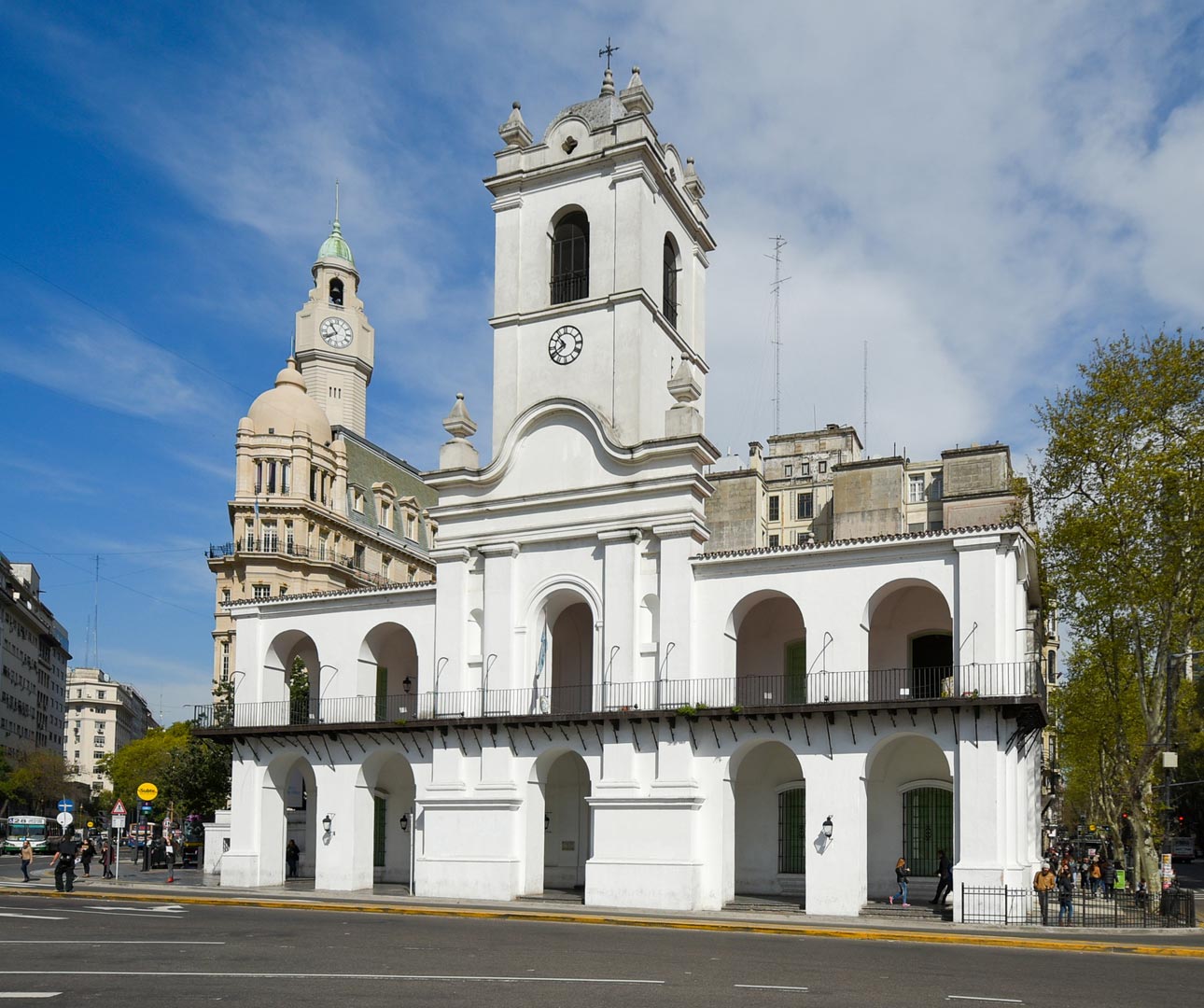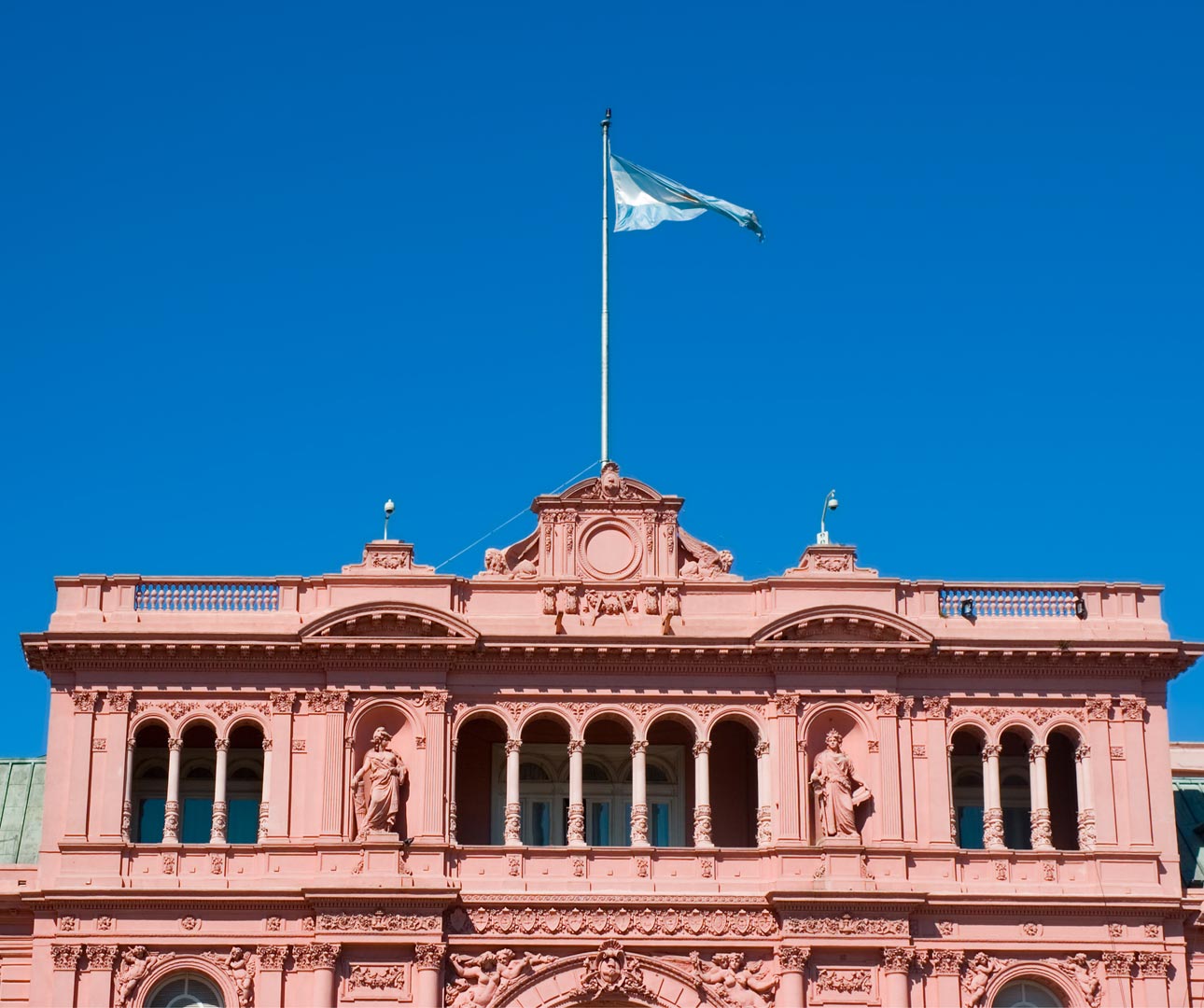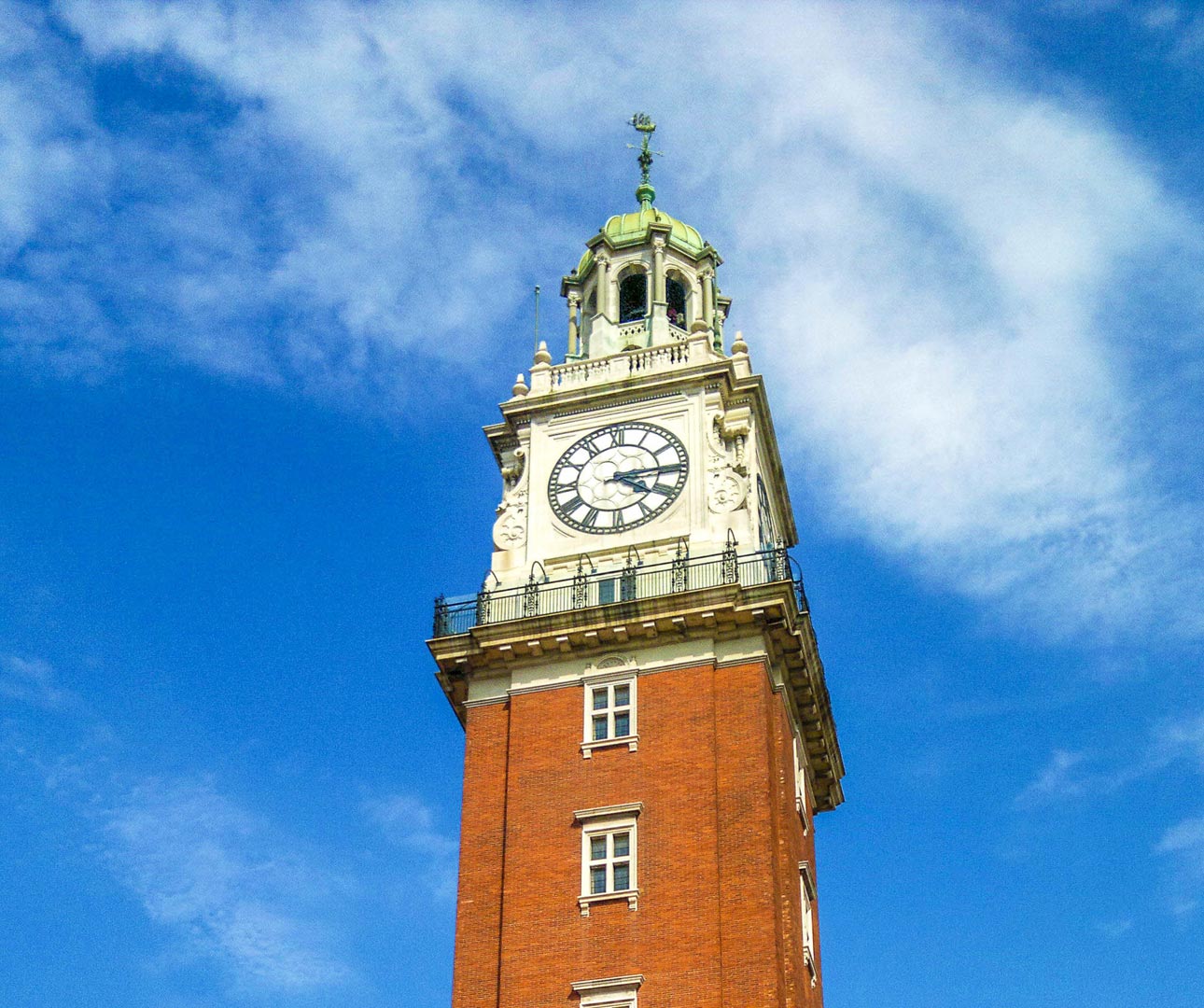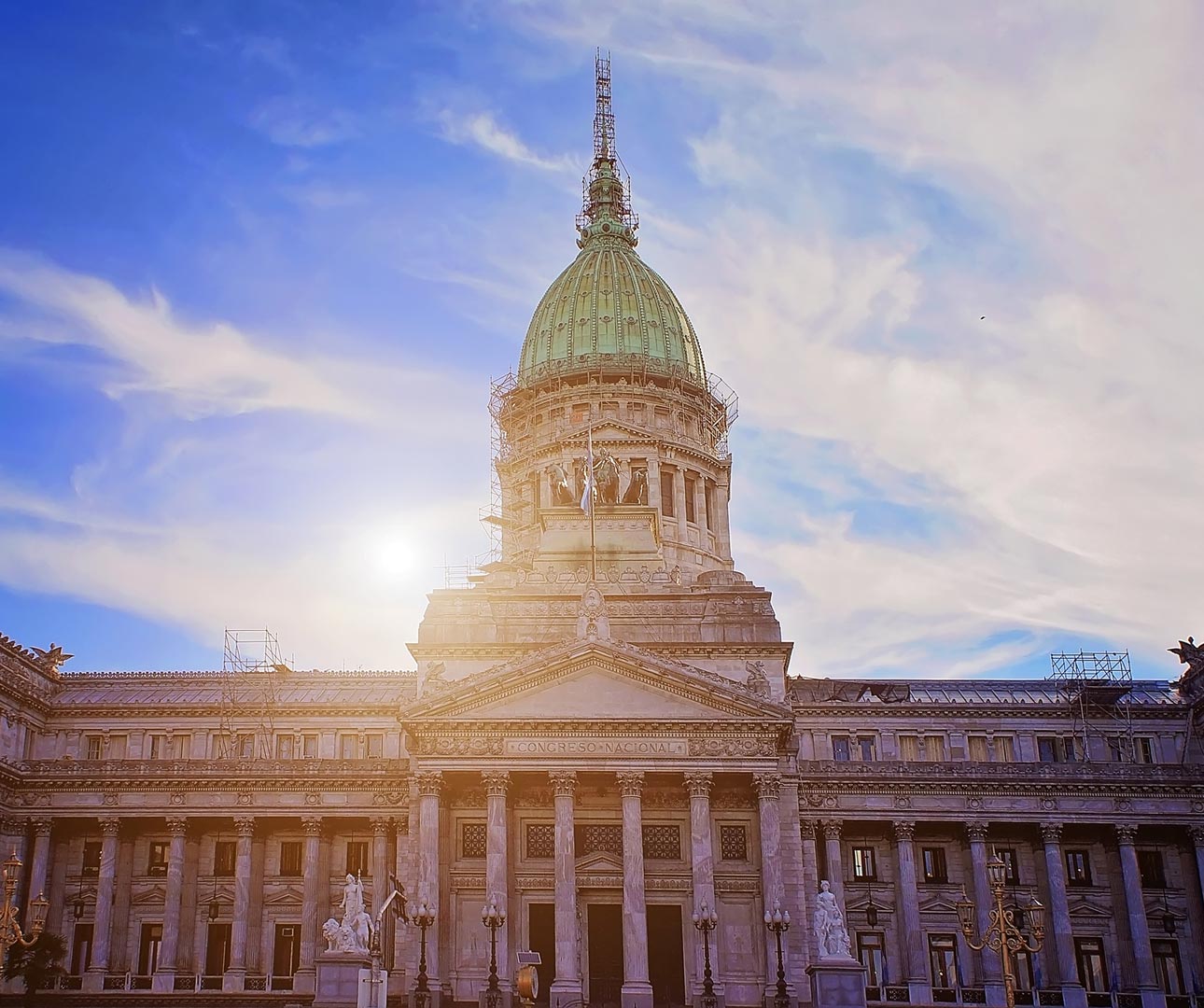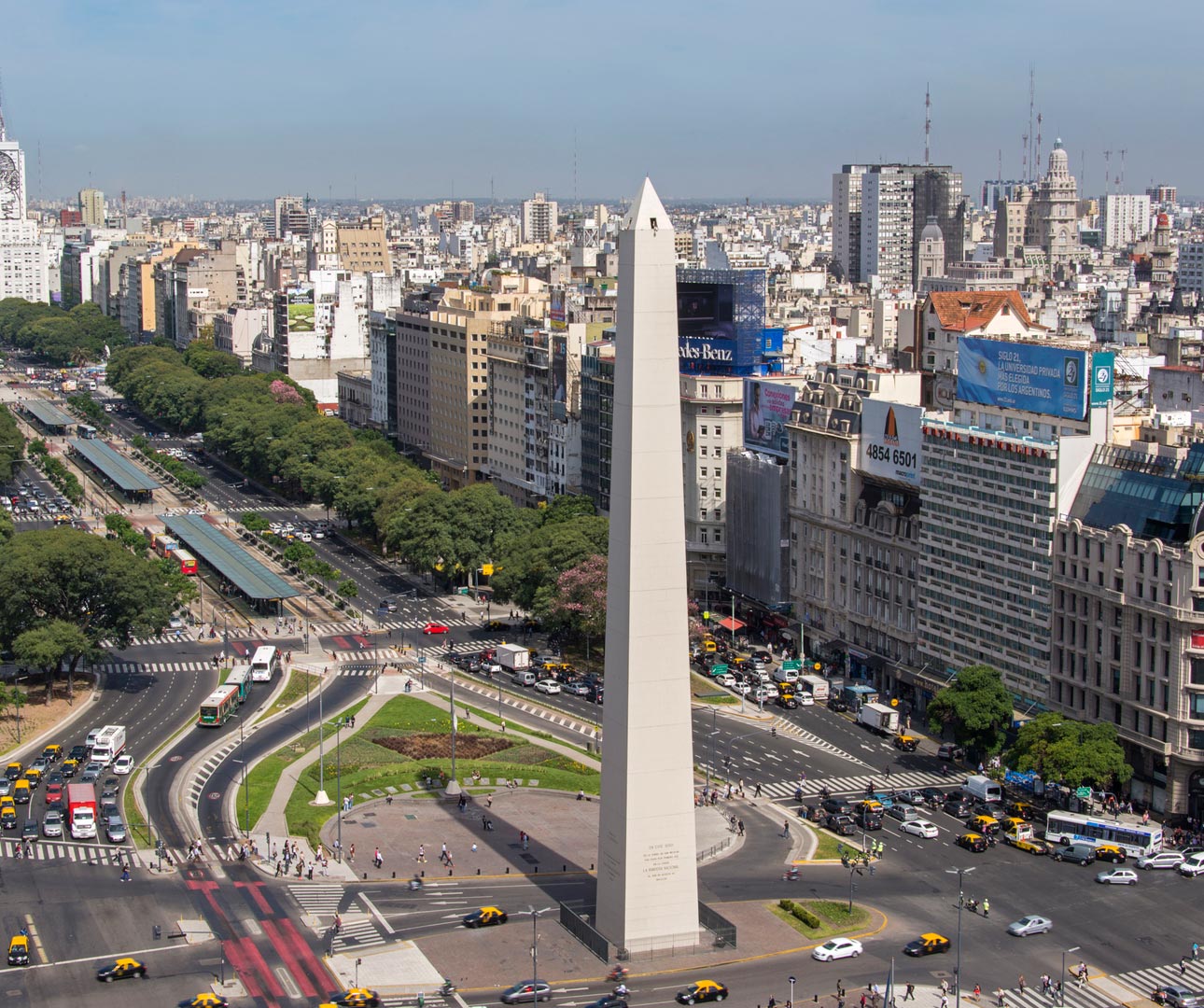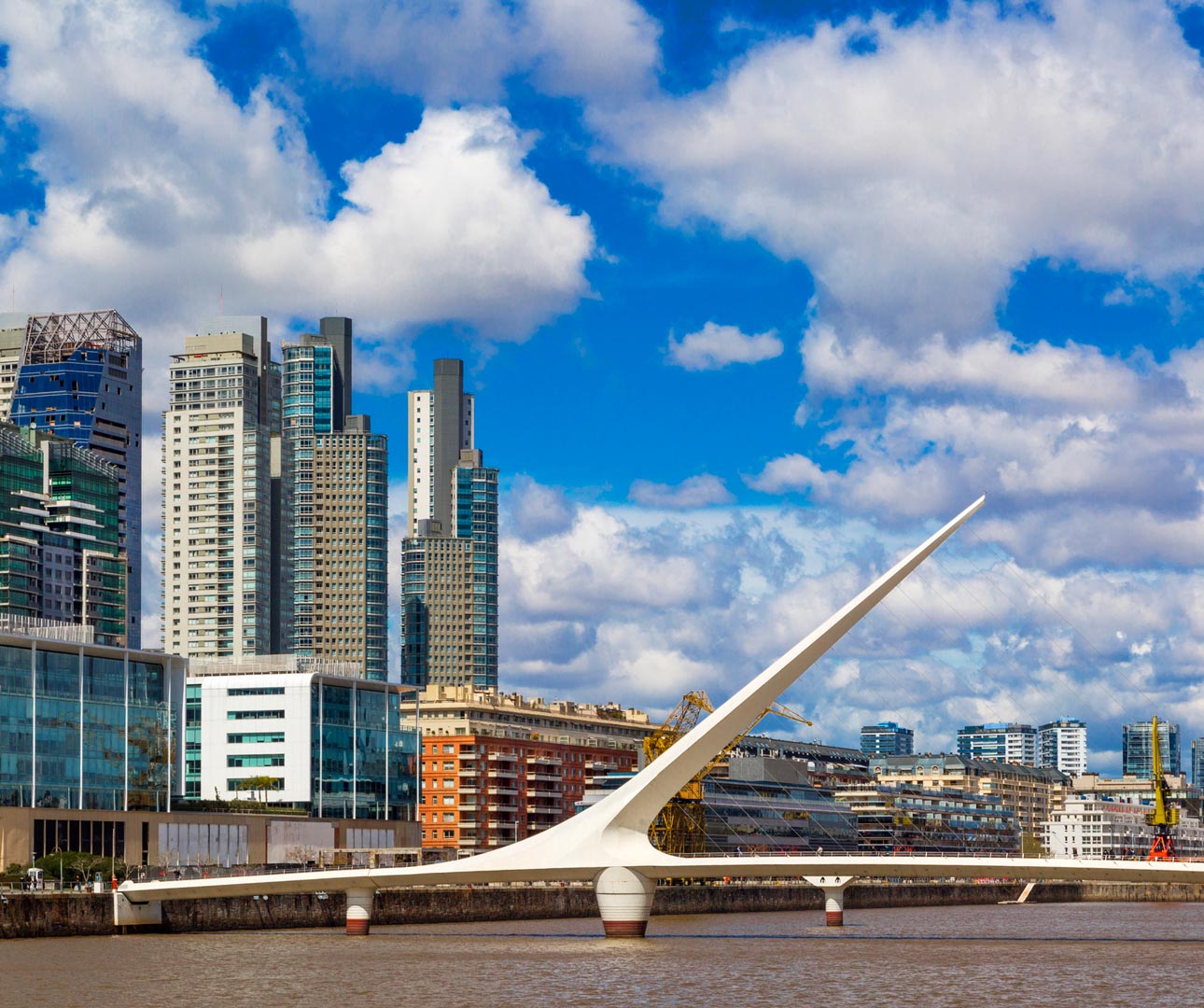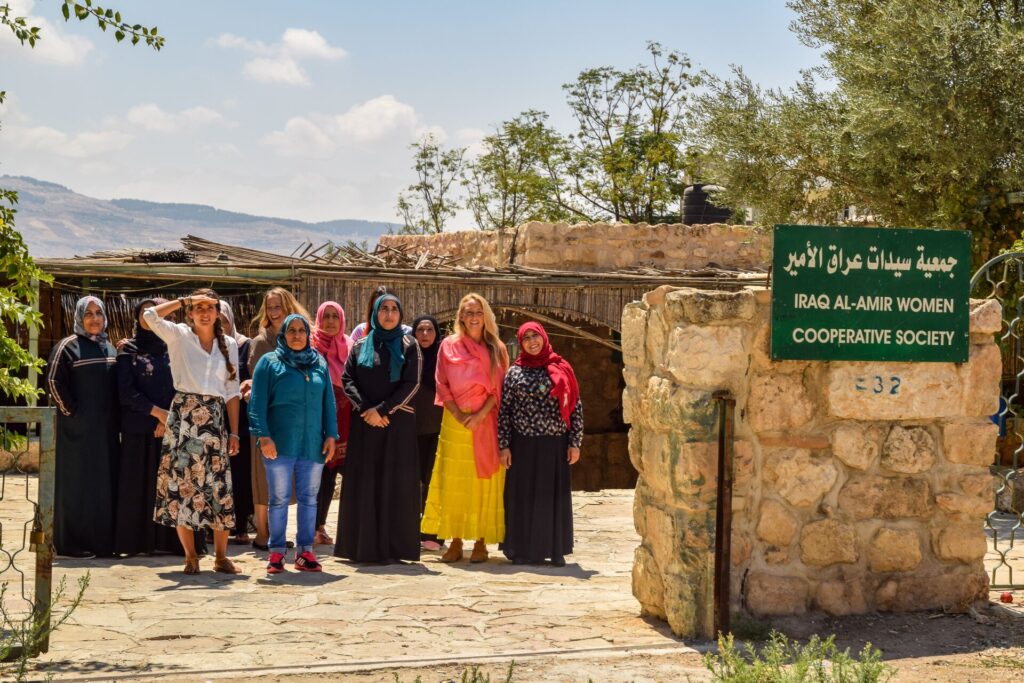From its past life as a colonial Spanish outpost to its position today as a thriving cosmopolitan capital, the rich history of Buenos Aires is written all over its buildings.
Trace the city’s journey through time, starting at early Spanish-style structures such as the Cabildo, through to the Neoclassical grandeur of 19th century masterpieces like Casa Rosada. Walk along the city’s wide avenues – at their prettiest during spring, when the jacaranda flowers bloom – and fall under the spell of the Belle Epoque magnificence that dominated buildings in Buenos Aires in the early 1900s. Then, get to the heart of the modern day metropolis through the contemporary architecture and designs of burgeoning districts like the docks. For the ultimate guided tour of this eclectic city, all you need to do is look up.
The Cabildo
Rising from the Plaza de Mayo like a perfectly iced wedding cake, the Cabildo is one of the most historic and important buildings in Buenos Aires. It was built in the early 17th century and used as a hub for the administrative council during the colonial period, and a governing base for the Viceroyalty of the Rio de la Plata. However, the Cabildo was then subject to almost two hundred years of expansion and rebuilding, with some of the its most distinguishing features – such as its 10-meter tower, red roof tiles and Spanish style arches – being demolished. Thankfully, by the 1940s, architect Mario Buschiazzo set about restoring the building to its former glory, and repairing its lost colonial features. Today, it’s the National Museum of the Cabildo, which chronicles the long history of the site as well as the May Revolution. Visitors should be sure to step out onto the Cabildo’s patio, which still includes an ornamental water well from 1835.
Cabildo © iStock/anvmedia
Casa Rosada
Just across the Plaza de Mayo from the Cabildo, you’ll find the distinctive Casa Rosada. It’s from a balcony here that, famously, Eva Perón addressed a sea of devoted supporters, and today it houses the President’s offices. Originally designed as a colonial Spanish fort, the building only acquired its eye-catching color when it became the government headquarters for President Domingo Faustino Sarmiento in the 19th century. The story goes that Sarmiento chose the pink shade in the hope of making peace by mixing the colors of the opposing political parties (white for the Unitarians and red for the Federalists). Visit the Casa Rosada Museum, behind the main building, for an insight into Argentina’s turbulent political past.
Casa Rosada © iStock/elnavegante
Torre Monumental
This striking tower (originally named Torre de los Ingleses) was constructed as a gift from the British community in Buenos Aires to mark the centennial of the 1810 May Revolution. The Palladian design incorporates British materials, such as bricks from Gloucestershire and white Portland stone, and is decorated with symbolic British emblems such as the English rose, Scottish thistle, Welsh dragon and Irish shamrock. The onset of the Falklands War in the 1980s resulted in vandalism of the tower and a dynamite explosion at its base. However, after careful restoration in the 1990s, the tower has returned to its former glory. Visit to admire the elaborate inscriptions and hand-carved decorations on this historic landmark.
Torre Monumental © iStock/zoroasto
Paz Palace
A perfect example of the French-inspired architecture that was the height of fashion in Argentina in the early 20th century, Paz Palace is a masterclass in extravagance. Built in the Beaux Arts style, it was made solely from French materials at the request of Jose C. Paz, the owner of the city’s La Prensa newspaper, who lived in the property. After its completion in 1914, it was the largest private residence in the city, with three wings and an internal garden. The interior is as lavish as you’d expect, with each room representing a different aspect of historical French décor. Guided tours are available and allow visitors to step into the French Renaissance in the Grand Gallery of Honor, or take a twirl in the Regency-style Ballroom. Wherever you look, no expense has been spared from lavish marble work to glittering chandeliers and elaborate gilding.
Palace of the Argentine National Congress
The seat of the Argentine National Congress, this grand, centrally located building is a National Historic Landmark that dates back to 1898. The neoclassical palace, which is crowned with an 80-meter bronze plated dome, was almost entirely made out of white marble, and this imposing structure is said to have been inspired by the U.S. Capitol in Washington, D.C. Regularly scheduled guided tours allow visitors to see that its interior is similarly spectacular, with highlights being the Hall of Lost steps, so called due to its echoing acoustics, and the beautiful Blue Room.
Argentine National Congress © iStock/Elijah-Lovkoff
Obelisk
Constructed in 1936 to mark 400 years since the founding of the Argentine capital, the Obelisk is an instantly recognizable landmark on the skyline of Buenos Aires. The monument’s modernist design, made of white stone from Cordoba, has historically divided opinion, with one mayor calling for its demolition on account of aesthetic, economic and public safety issues. The Obelisk has been a popular target for vandalism, particularly political graffiti, but it was carefully restored in 2005 and it’s still possible to read the inscriptions at the base of the building, which commemorate the most critical events in Argentina’s history.
Obelisk © iStock/FrankvandenBergh
Punte de la Mujer Bridge
A beacon of modern design in a city most associated 19th century Neoclassicism, the intriguingly named Puente de la Mujer, meaning ‘Women’s Bridge’ in Spanish, is a distinctive footbridge in the capital’s Puerto Madero neighborhood. Designed by the Spanish architect Santiago Calatrava, the structure is allegedly inspired by the tangled legs of a couple dancing the tango. Take a stroll across the bridge to take advantage of the fantastic view of the river and the changing face Puerto Madera; the bridge is bordered by the district’s old-fashioned warehouses on one side, with sleek new high rises dominating the cityscape on the other.
Punte de la Mujer © iStock/luoman
Get to know these beautiful buildings in Buenos Aires on our Classic South America journey.
